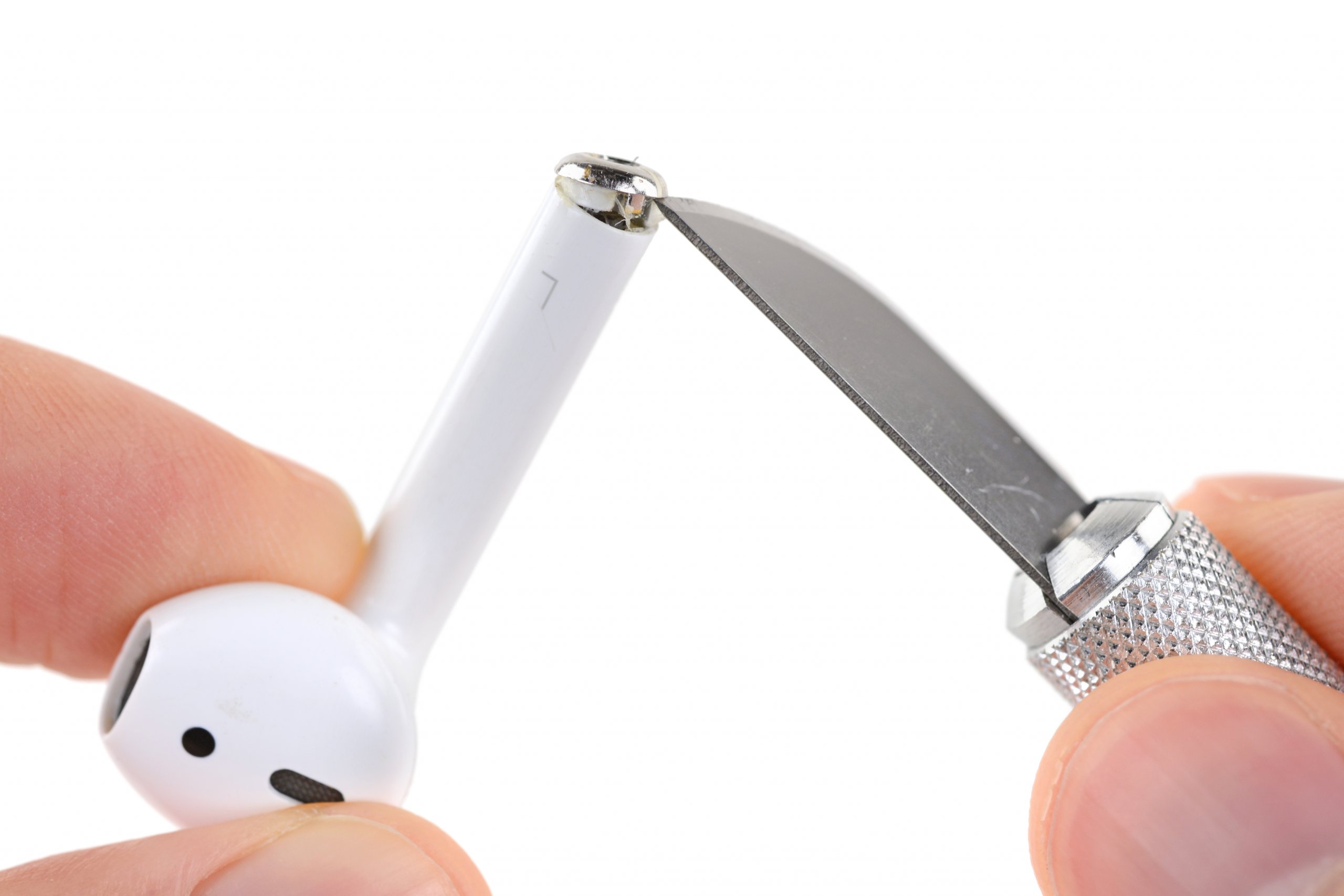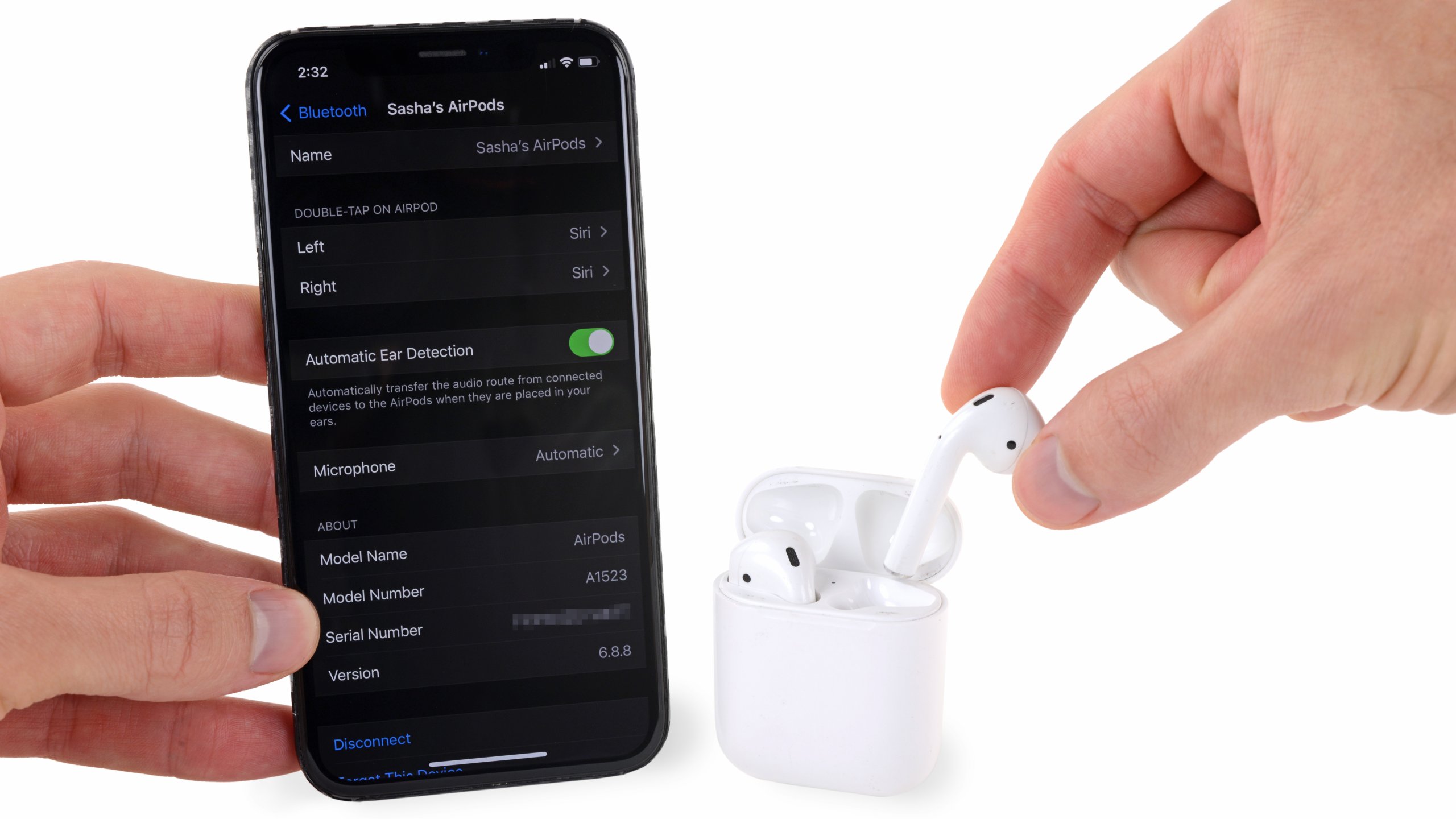
Like most AirPod owners, Emily Alpert found that, after 18 months, her wireless buds didn’t last, not even for one full run. Unlike most AirPod owners, Alpert, along with her best friend, got a robot to fix her problem.
That’s what started Podswap, a startup that replaces your AirPods, first or second-generation, for $60. First you get a thoroughly cleaned and refurbished pair sent to you, then you mail Podswap your dead pods. It’s like a SodaStream canister exchange, but for headphones that might otherwise be headed to a landfill.
Back in early 2020, when Alpert and friend Emma Stritzinger were sharing their low-battery pain and researching solutions, the accepted answer was that AirPods were disposable. We tore down the first-generation, second-generation, and Pro pods, and stated they were not designed to be fixed by any human. But the pair wouldn’t give up. “We knew this was a widespread issue and were persistent in finding the solution,” Strizinger said.
Alpert was working as an event planner at the time, Stritzinger a CPA at a major firm. They both knew, back when they were UCLA roommates, that they would start a business together, just not which kind. Presented with this challenge, they worked their networks, found people who knew people in the right trades and supply chains, and ended up founding Podswap.

How do they trade out batteries, at lower prices than Apple’s own “battery service” (read: total replacement)? Alpert and Stritzinger only let on so much in an interview. Alpert said their battery swapping involves “specialized equipment and precision robotics,” in a “somewhat automated process.” Every part of the AirPod, except the battery, is re-used, after being thoroughly brushed and disinfected with UVC light. And the replacement AirPods customers receive look identical to standard AirPods, minus “fine scratches and other minor imperfections,” as detailed on the product page.

There are some human-powered ways to replace AirPod batteries, but they’re not necessarily practical. An iFixit member posted an AirPod battery replacement guide in late 2019, involving 24 steps, a lot of work in tight spaces, and a rating of Very Difficult. A Baidu post shows a lower-tech hair dryer method. Repair business provider REWA demonstrates their suggested method on YouTube.
According to REWA, you need a rework gun to blast an AirPods’ metal bottom cap with 100 Celsius (212 Fahrenheit) air, while repeatedly prying adhesive and dodging a tiny flex cable. Then, using a well-cushioned clamp or a specialty jig, you use a micro-tip soldering iron to free the battery anode plate, and then pry the battery loose with tiny hooked tweezers. Not impossible, but not the kind of delicate experiment you’d want to try on your $160 headphones, twice. If Podswap’s machines can pull this off with profitable predictability, it’s impressive.

To verify they were actually repairing the units, we asked Podswap if we could send some first-generation Airpods and get the same pods back. Podswap agreed, so we sent them one of our family member’s dying AirPods. 12 days later, PodSwap shipped them from Miami. Podswap’s founders told us their turn-around varies, which is why they ship refurbished pods first. For a product that doesn’t store data, this approach makes perfect sense. It wouldn’t work as well with an iPad.

The returned pods (verified by serial number) looked, felt, and operated like new AirPods. They provided more than four hours of music while paired, similar to what Apple claims for a brand-new pair.
But you know us—we don’t stop at “they work.” Removing the battery, we managed to avoid destroying them. But the combination of 100-Celsius heat and clamping left visible damage on the plastic housing. The battery we pulled was an Aucopo brand, with the same part number as the original (though we can’t say if it’s the same manufacturer). Our second-chance AirPods came back with a 95 milliWatt hour battery, which is a tiny bit better than the 93 mWh battery we found in both the original and second-generation AirPods.
This is a pretty sweet service, combining swift replacement, a decent discount, and the nice feeling that you gave a busted pair of AirPods a second life. Very few repair shops are likely to offer AirPod battery replacements, as it’s a labor-intensive process involving very tiny, easy-to-snap parts. Podswap, which prominently displays its support for the Right to Repair, has inserted itself into a beneficial cycle. The founders say they’re looking to expand to other countries, as well as eventually take on Pro pods.
Not that this lets Apple off the hook. Even if a clever, singularly focused company has found a way, with the help of tooling and robotics, to extend their lifespans, AirPods’ design needs major improvements. Samsung’s Galaxy Buds have easily swappable batteries, proving that a long-lasting design is compatible with a sleek form factor. We, as humans, should build products that fellow humans can fix.




15 Комментариев
Very cool! But I’d like to be reassured that Podswap isn’t adding malware — perhaps iFixit could get a refurbished pair anonymously, then perform the same takedown.
andrea - Ответить
What sort of malware do you reasonable think could be introduced to an AirPod?
ts -
If the product doesn’t store data, how could malware be added to these devices?
Moeskido -
It’s just incredible what people come up with their thoughts. Malware in earphone never ever came to my mind, not even in 1/100000000000000 chance.
iFIX smartphone -
Malware???? Seriosly, what have you been smoking :)
Peter Newman -